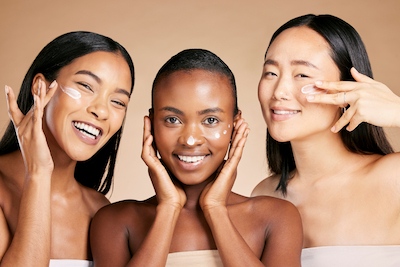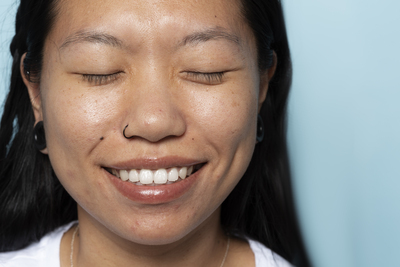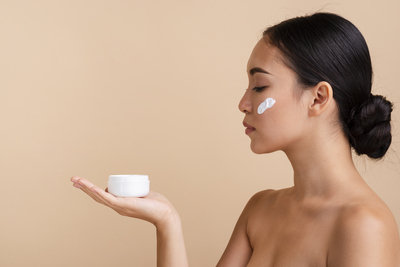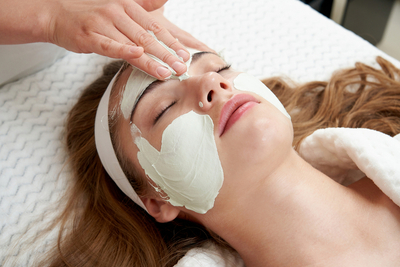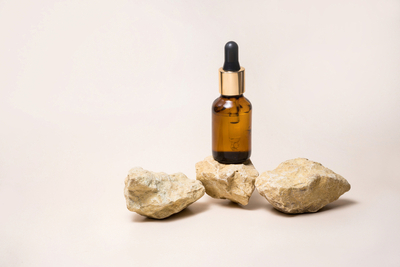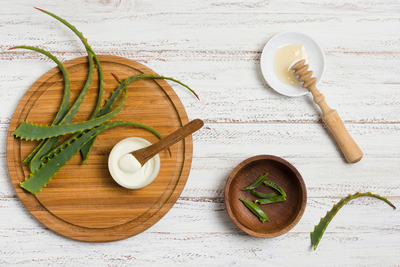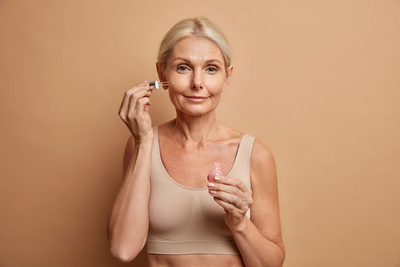Difference Between AHA and BHA: Which One Is Best for Your Skin?
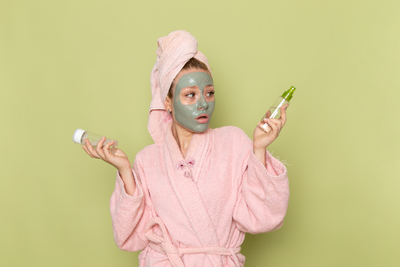
Exfoliation is one of the fastest ways to reveal smoother, brighter, and healthier-looking skin. But with so many acids on the market, it’s easy to get confused especially between the two biggest players: AHAs (Alpha Hydroxy Acids) and BHAs (Beta Hydroxy Acids).
Both are chemical exfoliants, both can transform your skin, but they work differently and choosing the wrong one for your skin type can do more harm than good.
So, which exfoliant is right for you? Let’s dive into the science of AHAs vs. BHAs, explore their benefits and risks, and show you how SkinBuddy helps you find the perfect exfoliant without risking your skin barrier.
What Are AHAs and BHAs?
AHAs (Alpha Hydroxy Acids)
AHAs are water-soluble acids derived from fruits, milk, or sugar cane. They work on the skin’s surface by loosening the bonds between dead skin cells, promoting cell turnover and smoother texture.
Common AHAs include:
-
Glycolic Acid
-
Lactic Acid
-
Mandelic Acid
-
Citric Acid
According to a review in the Journal of Clinical and Aesthetic Dermatology, AHAs are effective for improving skin texture, reducing fine lines, and fading hyperpigmentation.
BHAs (Beta Hydroxy Acids)
BHAs are oil-soluble acids that penetrate deeper into pores, making them ideal for oily and acne-prone skin.
The most common BHA in skincare is Salicylic Acid.
The FDA explains that BHAs not only exfoliate but also have anti-inflammatory properties, making them effective for reducing acne, blackheads, and clogged pores.
Key Differences Between AHAs and BHAs
| Feature | AHAs | BHAs |
|---|---|---|
| Solubility | Water-soluble | Oil-soluble |
| Depth of action | Surface-level exfoliation | Penetrates into pores |
| Best for | Dry, dull, aging skin | Oily, acne-prone, clogged pores |
| Common acids | Glycolic, lactic, mandelic | Salicylic |
| Extra benefits | Hydration, collagen stimulation | Anti-inflammatory, oil control |
| Risks | Can cause irritation & sun sensitivity | Can cause dryness & irritation if overused |
👉 In short: AHAs resurface, BHAs decongest.
Benefits of AHAs in Skincare
-
Brighter Complexion: Removes dull, dead skin cells.
-
Anti-Aging: Stimulates collagen, reduces fine lines.
-
Fade Dark Spots: Effective against hyperpigmentation and sun damage.
-
Hydration: Lactic acid, in particular, is also a humectant.
Benefits of BHAs in Skincare
-
Clears Pores: Dissolves oil and debris inside pores.
-
Reduces Acne: Anti-inflammatory properties soothe breakouts.
-
Controls Oil: Helps regulate sebum production.
-
Improves Texture: Smooths rough, congested skin.
Risks and Downsides
AHA Risks
-
Increased sun sensitivity
-
Redness and irritation if overused
-
Not always suitable for sensitive or rosacea-prone skin
BHA Risks
-
Can cause dryness and peeling
-
May irritate very sensitive or eczema-prone skin
-
Overuse can compromise skin barrier
A 2023 review in Cosmetics confirms that while both AHAs and BHAs are safe and effective, the concentration and frequency of use must be carefully managed to avoid irritation.
How to Choose Between AHA and BHA
-
Choose AHA if…
-
You have dry, dull, or aging skin
-
You want to brighten dark spots or sun damage
-
You need surface exfoliation for smoother texture
-
-
Choose BHA if…
-
You have oily or acne-prone skin
-
You struggle with blackheads or enlarged pores
-
You need deeper pore cleansing and anti-inflammatory effects
-
👉 Many people benefit from using both, for example, an AHA serum a few nights per week for brightness, and a BHA toner for pore care.
How to Use AHAs and BHAs Safely
-
Start Slowly: Use 1–2 times per week.
-
Don’t Mix Too Much: Avoid layering strong acids and retinoids together.
-
Moisturize: Always follow with a barrier-repair cream.
-
Wear Sunscreen: Essential with both AHAs and BHAs.
-
Patch Test: Especially if you have sensitive skin.
How SkinBuddy Helps You Find the Right Acid for Your Skin
The challenge? Many products labeled as “gentle exfoliants” still contain irritants or pore-clogging ingredients that can worsen your skin.
Here’s how SkinBuddy makes it simple:
- In your Skin Profile, select Acne-Prone Skin, Sensitive Skin, Hyperpigmentation, or Aging Skin whatever matches your concern.
- Scan any exfoliant product and SkinBuddy shows instantly whether it contains AHAs, BHAs, or both, and how they affect your chosen concerns.
- Each ingredient is explained in detail: pore-clogging, barrier-damaging, or beneficial.
- Use Discover Ideal Match to filter for products with AHAs or BHAs that fit your unique skin goals - like brightening, acne reduction, or hydration.
- Instantly get curated, science-backed product recommendations tailored just for you.
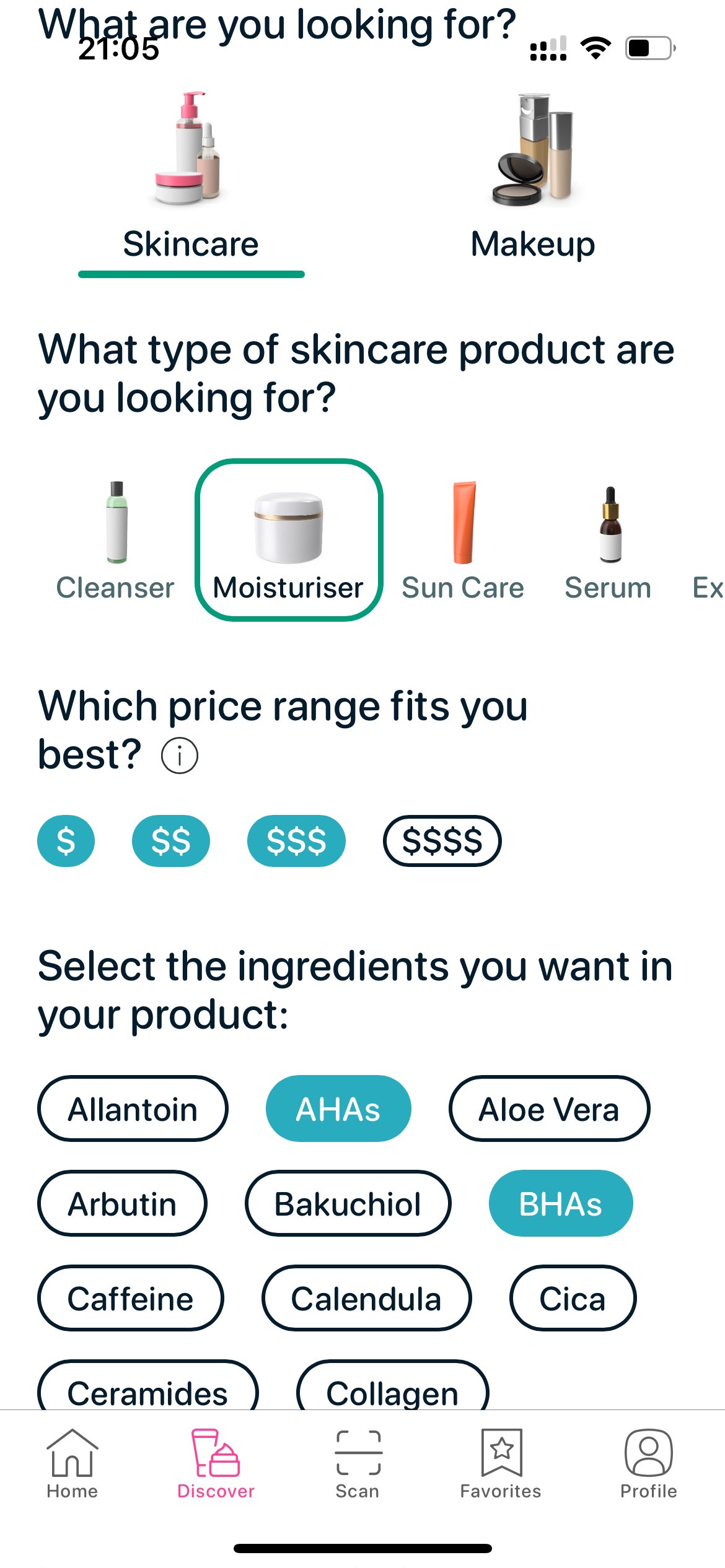
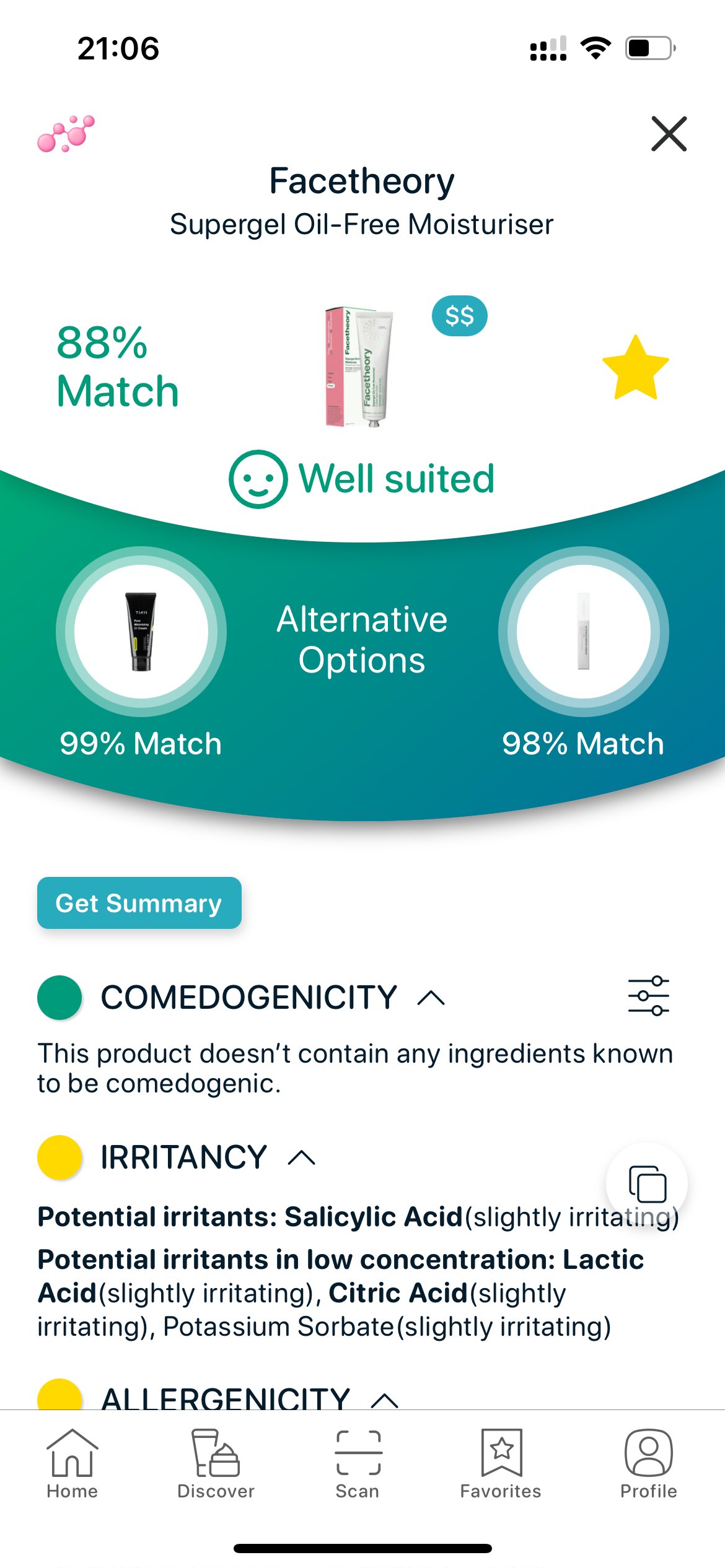
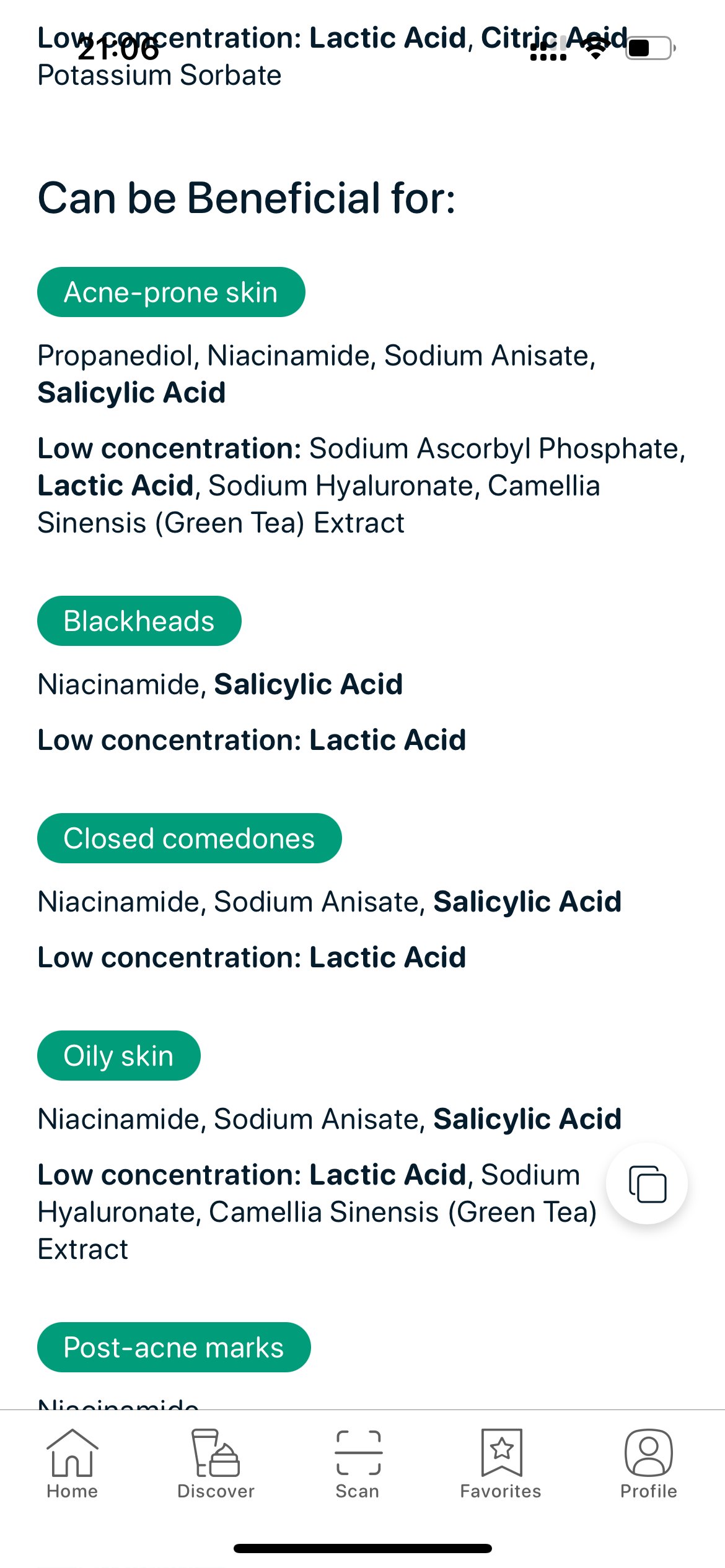
Try SkinBuddy to find out what works for your skin, and what doesn’t.
Scan your skincare, avoid pore-clogging or irritating ingredients, and discover smarter product matches. Open the web app or download the mobile app to get started.
Open SkinBuddy Web Appor
Check if your skincare suits your skin type, sensitivity, or acne-prone needs at skinbuddy.app and discover better options that match your routine and goals. SkinBuddy makes it easy, fast, and science-backed.
Scan to get started:

Web App (mobile only)

App Store & Google Play
FAQs About AHAs and BHAs
-
Can I use AHA and BHA together?
Yes, but start slowly. Alternate days to avoid irritation. -
Which is better for acne scars?
AHAs (like glycolic or lactic) are better for post-acne marks; BHAs are better for preventing new breakouts. -
Are AHAs or BHAs safe during pregnancy?
Lactic acid (AHA) is generally considered safe; salicylic acid (BHA) should be used cautiously, consult your doctor. -
How long before I see results?
Most people notice improvement in 2–4 weeks with consistent use. -
Which acid is best for sensitive skin?
Lactic acid (AHA) or low-strength salicylic acid (BHA) are usually gentlest.
Final Thoughts
AHAs and BHAs are powerful tools for healthier, smoother skin, but only if you choose the right one for your skin type and use it correctly.
With SkinBuddy, you never have to guess. Our app analyzes every ingredient and shows you exactly how AHAs and BHAs impact your skin concerns—so you can exfoliate smarter, not harsher.
👉 Ready to find your perfect exfoliant?
Download the SkinBuddy app and discover AHA and BHA products matched to your skin type and goals.


